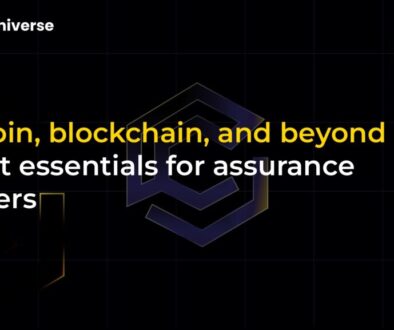Launch of XRP Ledger EVM Sidechain on Mainnet in 2025: A Game Changer for DeFi

The blockchain world is buzzing with anticipation as Ripple’s XRP Ledger (XRPL) prepares for a monumental leap forward. The highly anticipated Ethereum Virtual Machine (EVM) sidechain is set to launch on the mainnet in the second quarter of 2025. This significant announcement, made by Ripple executives David Schwartz and Jaazi Cooper at the Apex 2025 conference in Singapore, marks a pivotal moment for the decentralized Layer 1 blockchain.
Currently, the XRPL operates without native EVM support, limiting its direct compatibility with Ethereum’s vast ecosystem of smart contracts and decentralized applications (dApps). The new EVM sidechain is designed to bridge this gap, enabling seamless integration and expanding XRPL’s utility. Developed by a powerhouse collaboration including Peersyst Technology, Cosmos, Common Prefix, Axelar, and Commons, this sidechain leverages XRP as its native token, promising high-speed and cost-effective transactions. A successful testnet, boasting over 280,000 daily transactions, has already garnered immense interest, signaling a new era of growth and innovation for the XRP ecosystem.
Understanding XRPL Sidechains
An XRPL sidechain is essentially an independent blockchain that operates in parallel to the main XRP Ledger. Think of it as a separate, but connected, highway that runs alongside the main expressway. This unique architecture allows the sidechain to have its own:
- Consensus algorithm
- Transaction types
- Set of rules
The beauty of this model lies in its ability to facilitate value transfer between the sidechain and the mainnet, all while ensuring the main XRPL remains stable and fast. If the sidechain experiences heavy traffic or even a security incident, the mainnet’s performance is unaffected, maintaining its core strengths.
The XRPL EVM sidechain utilizes a Proof-of-Authority (PoA) consensus mechanism. This means that a select group of validators are responsible for confirming transactions, and any changes to this validator set can only occur through a transparent governance process. This design choice helps maintain the XRPL’s efficiency while extending its capabilities with EVM compatibility. A crucial element is the native bridge that connects the sidechain to the XRP Ledger, enabling smooth interoperability and broadening the XRPL’s applications within a multi-chain environment.
The XRPL EVM Sidechain: Bridging XRPL and Ethereum
The core mission of the XRPL EVM sidechain is to create a robust link between the XRP Ledger and Ethereum. This integration aims to combine XRPL’s renowned security and speed with Ethereum’s extensive smart contract capabilities. What does this mean for developers and users?
- Developers can deploy Ethereum dApps directly on the XRPL, tapping into its efficient infrastructure.
- The XRPL’s utility and Decentralized Finance (DeFi) offerings will see a significant boost.
- Builders can experiment with new applications on the sidechain without posing any risk to the stable core network.
Peersyst Technology is leading the development efforts, working closely with industry players like Cosmos, Common Prefix, and Axelar. This collaborative approach is integrating the XRPL’s global payments infrastructure with EVM-based programmability. This synergy will empower developers to automate settlement processes and manage assets across various blockchains, positioning the XRPL as a vital player in the evolving multi-chain blockchain ecosystem and unlocking new economic opportunities.
Impact on Institutional DeFi and Interoperability
The launch of the EVM sidechain is set to revolutionize Institutional DeFi. For financial institutions, this development offers a pathway to:
- Meet stringent regulatory requirements while engaging in DeFi.
- Offer innovative new lending options within a compliant framework.
Ripple’s 2025 roadmap strongly emphasizes this focus on institutional DeFi, aiming to blend decentralized lending with the XRPL’s inherent security and compliance features. This strategic move provides traditional finance with a compelling solution to participate in the growing DeFi landscape while adhering to necessary regulatory standards.
A cornerstone of this enhanced interoperability is the Axelar bridge. This integration with Axelar’s network facilitates secure and efficient transfer of assets across a multitude of blockchains. By connecting the XRPL to a diverse range of networks, the Axelar bridge significantly broadens the scope of interoperability, allowing the XRPL to interact with and benefit from new ecosystems.
Conclusion
The upcoming launch of the XRP Ledger EVM sidechain on mainnet in Q2 2025 is more than just a technical upgrade; it’s a strategic expansion that positions XRPL at the forefront of blockchain innovation. By embracing EVM compatibility, the XRPL is not only enhancing its utility and DeFi offerings but also opening its doors to a wider developer community and a new wave of institutional adoption. This integration promises to unlock unprecedented opportunities, making the XRPL a formidable and versatile player in the competitive blockchain landscape, driving forward the vision of a truly interconnected and efficient decentralized future.


